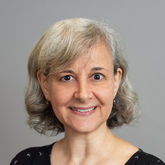When Palliative Care Demand Exceeds Capacity: A Virtual Panel Discussion

COVID-19 has ushered in a new era of appreciation for palliative care teams, with consult volumes increasing for the majority of programs across the country. Unfortunately, this increased demand does not always come with a concomitant increase in palliative care team staffing, putting additional pressure on teams already grappling with strained resources. That said, many programs have responded creatively and effectively to increased demand. In the hopes to learn more about these strategies, CAPC spoke to six palliative care program leaders from hospitals of different sizes across the country.
Triage, Triage, Triage and Communicate, Communicate, Communicate
Not surprisingly, all the palliative care programs relied on triaging when demand exceeded capacity. And while most programs did consider objective criteria—such as new critical care admissions, repeat admissions, or those who screened for palliative needs in the emergency department—the strongest consideration for prioritizing new patients was always based on communication with the referring clinicians.
Using communication with colleagues as a triage tool serves three purposes:
1) First, your colleague’s level of concern accurately relays the urgency of palliative care needs.
As Beth McCready, RN, CHPN, who provides acute care palliative care as part of the Hospice of Northwest Ohio’s services, notes, “If the floor nurse is panicked because things are changing rapidly for a patient, that’s your signal to prioritize him/her/them.” Treating colleagues must also triage their own referrals, and a straightforward conversation builds trust and relationships. For example, Leah Klug, BCC-PCHAC, at Swedish Medical Group explains to her referrers, “We’re stretched too thin right now, and want to provide the most value—who are the patients where you think we could be most helpful?”
2) Secondly, relying on brief conversations with colleagues can help them flex their own palliative care skills.
As Niharika Ganta, MD, MPH, at the Hospital of the University of Pennsylvania notes, “When you push the referring clinician to really articulate what the goal of the consult is, it sometimes helps them realize that they can handle the situation themselves.” For example, this may mean an oncologist conducting a family meeting herself to determine next steps. Dr. Ganta and her colleagues have noticed that when a consultation is delayed, the palliative care team may no longer be needed since the treating team has managed the issue. (For Dr. Ganta’s team, this accounts for about 10-15% of cases.)
3) Lastly, over time, communicating with colleagues to prioritize patients for palliative care consultation helps the team to get involved earlier.
As Carl Grey, MD, of Atrium Health Wake Forest Baptist has learned, “We can train our colleagues about the ‘phenotype’ of who can benefit the most from palliative care. When they recognize this, we can get to patients earlier, accomplish more, and show valuable outcomes.”
Gathering and Deploying All Resources
With hospital budgets tightening and challenges in recruiting additional team members, the program leaders we spoke with turned to new sources of talent and time. Sonia Malhotra, MD, MS, from University Medical Center New Orleans (UMCNO)/Tulane School of Medicine brought a variety of people onto her team, such as chaplaincy residents, social work interns, psychiatry residents, psychology post-docs, and more—all of whom effectively met the needs of her patients. She notes, “The field might think that you have to add billable providers to expand your capacity, but you can do a lot with non-billable clinicians.”
“The field might think that you have to add billable providers to expand your capacity, but you can do a lot with non-billable clinicians.”
UMCNO also relies on nurses and medical assistants in their clinics for screening and assessments, and to start meaningful conversations with patients and families. Dr. Malhotra notes, “This is a prime opportunity since they’re already in front of the patient and asking questions.” Like his colleagues at UMCNO, Dr. Grey at Atrium Health Wake Forest Baptist also incorporates chaplaincy interns into his team; as another strategy, he has identified retired palliative care professionals from his system to help when needed.
Other programs deploy their interdisciplinary team members to “divide and conquer,” such as nurses making initial visits or social workers or chaplains serving as the primary for a subset of patients. As Rev. Klug notes, “You can often tell from the chart if someone is in spiritual distress; research shows that spiritual care professionals are effective at helping families to clarify goals of care.”
Others have simply found ways to provide high-quality care within less time. Lara Clary-Lantis, DO, of the Trinity IHA Medical Group has found that thirty-minute follow-up appointments are just as effective as the forty-five minute appointments her team had previously scheduled in the outpatient clinic, and brief telehealth visits are also effective. As a result, her group is able to see more patients in need within the existing workday. Dr. Grey at Atrium Health Wake Forest Baptist has reduced his team’s morning meeting to a highly structured and effective fifteen minutes, giving the team more time for patient care each day. He has also successfully challenged his team to think about their own productivity and fit another few patients in per week.
Other Strategies to Balance Capacity and Demand
With necessity being the mother of invention, the program leaders we spoke with have all developed new processes and protocols to meet rising patient care needs without unduly burdening their teams. For example:
- Direct Referral to Hospice: Several of the programs interviewed stated that when the palliative care team is called to discuss hospice with a patient/family that has already requested hospice, they give these cases to the floor care manager or the hospice liaison without making a consultation. As Dr. Ganta notes, “We’re trying to teach that calling our team first creates a delay in care, which is not helpful to the family and delays a discharge.”
- Judicious Visits: None of the programs interviewed saw inpatients daily, and all signed off when symptoms stabilized and goals were clarified. Ms. McCready notes that her team gets very concrete about when they’ll return. “We state in our progress notes that we will follow-up once x, y, or z happens, or within a time period”, which helps build trust and relationships with their colleagues.
With abundant creativity and efficiency, the program leaders we interviewed are not only managing their teams’ workload but also celebrating their accomplishments in the midst of so much compromising. “While it’s difficult to be in the position of not serving all patients to the extent you hope, we always make sure to recognize that we are still adding value,” notes Rev. Klug, “and that we are making a difference for those patients and families that we do reach.”
“While it’s difficult to be in the position of not serving all patients to the extent you hope, we always make sure to recognize that we are still adding value and that we are making a difference for those patients and families that we do reach.”
Is doing more with less ideal? Of course not. While palliative care programs are well-served deploying strategies that lead to long-term capacity-building across the organization (such as helping referrers distinguish which patient needs they can address themselves), palliative care programs cannot extend themselves ad infinitum. However, optimizing for quality and efficiency of care delivery helps program leaders put their best foot forward in conversations with leadership about hiring new team members. As health care organizations begin to rebuild from the pandemic, those palliative care programs that have demonstrated creativity and strong stewardship of resources will be better positioned to grow their programs over time.
For more information, review CAPC’s toolkits, Maximizing Palliative Care Program Efficiency and Building and Supporting Effective Palliative Care Teams.

Be the first to read articles from the field (and beyond), access new resources, and register for upcoming events.
Edited by Melissa Baron. Clinical review by Andrew Esch, MD, MBA.
